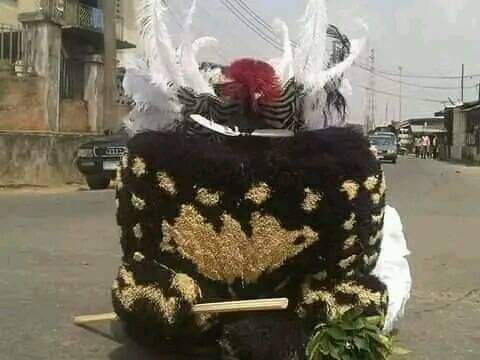© Holyns Hogan, 2023
Though about 99% Efik native believe through the ages that the Efik name for Lion is Ekpe, research has simply proven that to be wrong.
Ekpe is simply the Efik name for Leopard/Panther. History informs us that the reason that Efik ancestors invented and called their Idem Ikwọ (social Ekpe)/Ekpe in general- Ekpe was first to represent and mimick the Leopards/Panthers that often stalked, attacked and destroyed Efik ancestors in the ancients during their migration history; across thick forests/jungles (Akai/Nkimmkim Akai). Efik ancestors even named the part of Akani Obio Efik (Old Calabar Town) that had the greatest forest presence/concentration of Leopards- nkim [Akai] ikọt Ekpe (thick Ekpe Forest- bush), later modernized to Leopard Town in English. Of course, it was usually in like manner that Efik ancestors equally named such plays/dance as Fiom Inyañ, Ikut, Ekọmbi and Udom Inyañ etc. after the waters/their belief in Ndem/marine deities.
Note that the Efik, unlike the English who generally see cats as umbrella name for Lion, Leopards, cats etc. in zoology, wildlife or environmental studies, specifically call cat-ÀÑWÀ (whether it is añwa ufọk-domestic cat or añwa ikọt -bush/forest cat eg.Lynx).
Precisely, Efik calls domestic cats and/or every other cat that is naturally decorated/ domesticated AÑWA MBANA. Note that mbana is the Efik homonym for decoration, adornment with beauty ornaments/beautification.
However, given that Ekpe (Leopard) equally has natural decorative spots on its body (called ÑKÉM) as the cat, and is traditionally the one imitated socially by the Efik as Idem Ikwọ, it is equally understood why Leopard is nicknamed Ekpe Ñkem and its Ñkem (body spots) seen as Ñkem Ekpe.
Also, it is inferred that since mbana as seen in “añwa mbana”(cat), infers body decoration (as is with Leopard), it follows logically that Idem Ikwọ is often eulogized as “añwa mbana eye ukot isañ”, ọnyọmba or otutu teteh! because of its natural decorative nature and sometimes caty-work when seen as Ekpe asaña nyọnyọ ndik anam ebot (figurative statement).
Further note that Efik ancestors contextually used ñkem to infer naturally borne marks or design as seen in Cheater or Tiger, hence, the reason that some people see them as ÑEM EKPE/ENYENE ÑKEM EKPE in the same manner they see they descriptively see Leopard.
Lastly, Efik calls LION ANÀWUNÈKPÈ (a word equally used in Aye, 1991 to infer the 7 stages of Ekpe in Biase or a long body cat with heavy hands). It is so called for obvious reasons, prominent amongst which is the Lion’s different vocalizations and/or “roar” [sound] called [o]ñwune, not ñkuni- snore).
However, since the real Ekpe Efik called Nyamkpe is seen to spiritually involve the Lion’s type of roaring, violent, bloody/deadly attacks/”Lion share ideology” ( asserted by such sayings as “Ekpe ekim”, “okpo okube, Nyamkpe ke añwa ada”, “Nyamkpe Obutọñ ebiet inaha ye fiom, ekim owo ọdiọk ndibiak”) in its rituals/practice, including Ekpe’s stylization with Nyanya-symbolizing mane and mbọbọ as isim/seen physically in theophany (precisely, Ekpe as the gods representative in human affairs/government), it is clearly understood why Ekpe (like the ancient Egypt or Greeks sphinx) is often regarded as a god by initiates. This is easily asserted by the Ekpe saying- “Abasi ikpaha, Ekpe ikpaha”.
Editorial: All Rights of copy@Holyns Hogan, 2023. Don’t Plagiarize.










